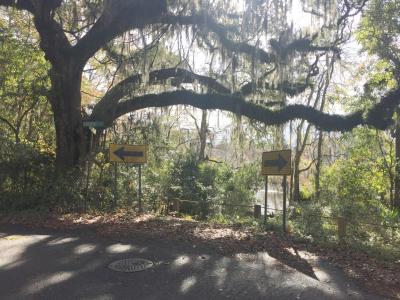Pottery Hill
Corner of Monroe and Colbert Streets. Pottery Hill. Mandeville occupies an ancient shelf of high ground formed along the north shore of Lake Pontchartrain during the last Ice Age. This unique geography and its rich ecological diversity made human settlement inevitable.
The Tchefuncte People are generally credited as the earliest inhabitants, dating from 500 BC. Other indigenous peoples followed: The Marksville Culture ( AD 1-400) and later the tribes of the Acolapissa and the Choctaw.
During the Choctaw period, this area was a part of West Florida and was governed by the French (1682-1763) and Spanish (1783-1810).
During a brief period between 1763-1783, British control resulted in the arrival of English land grant families who settled in among the Spanish land grantees and created brick and charcoal kilns and potteries along Bayou Castine.
Dominated by the ancient Castain Oak (2006, Live Oak Society member), shards, bone fragments and shell deposits have been uncovered at this site that suggest continuous use by indigenous peoples well into the 20th century.
According to an article written by Melba Colvin in 1973, this area was known to long time residents as the 'pottery'. Louis Vial recalled that his grandfather had worked at a pottery located here. Walter Smith reported that he obtained many loads of shell here in 1912 using Tennessee wagons and double teams to move the loads of shell and clay. He recalled seeing bones and arrowheads mixed in amongst the pottery shards. Edgar Sharp remembered tales told by his father and uncles of dances at the 'pottery' where they would play their violins with the Indians who arrived from Abita Springs, Lewisburg, Chinchuba and Lacombe in the years between 1890 and 1900.
Mrs Colvin closes with this: 'The history of the 'pottery' located at the intersection of Monroe Street and Bayou Castine is one of continuing interest to historians.....It is hoped that the building of a boat ramp can be postponed or the location moved until more thorough research can be completed.'
In 2012, with the ancient and pristine property facing development again, the City of Mandeville purchased 5 acres that included the Monroe Street right-of-way. Finally, in 2019, a protective designation (zoned as open space) was placed on this unique and culturally important site.


